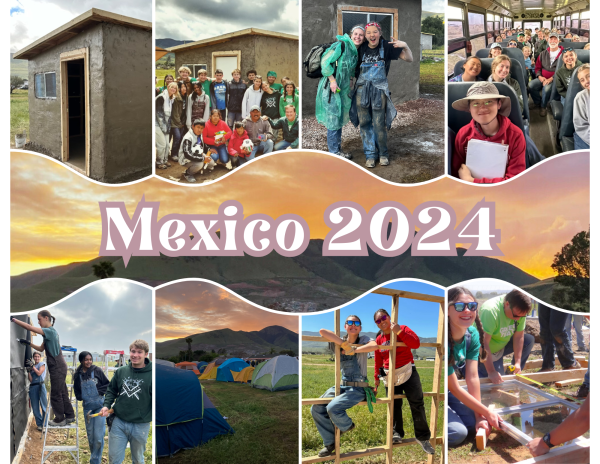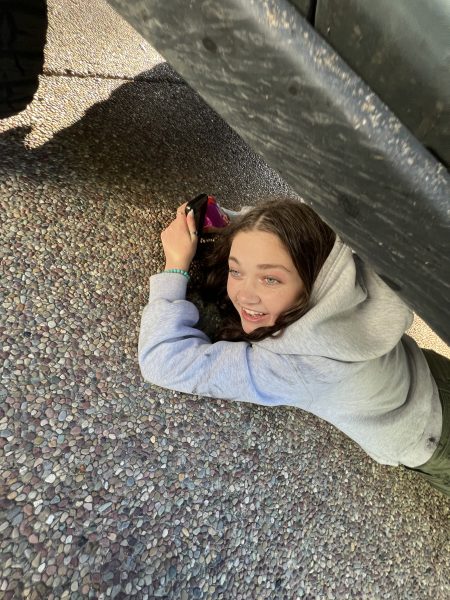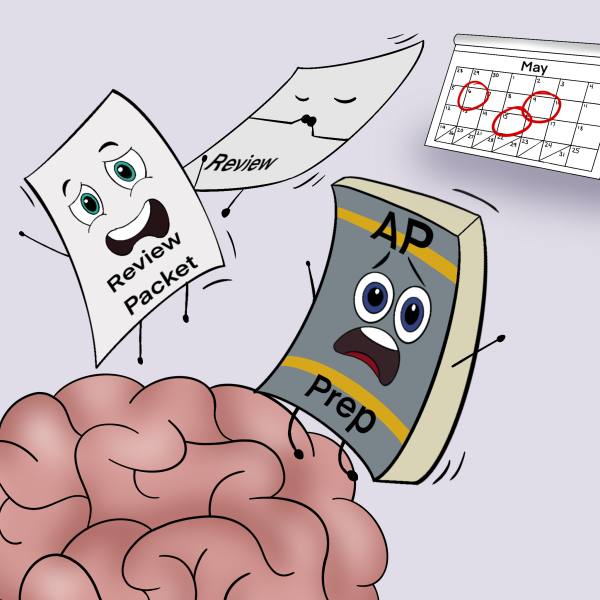New Campus Waste Management Implemented
January 12, 2017
The Environmental Club, also known as Global Student Embassy (GSE), has long anticipated the implementation of a new trash sorting system that will change Campolindo’s environmental impact. The project has been in the planning stages for nearly a year.
The new system will include more trash, recycling, and compost bins throughout classrooms and the quad. Both students and faculty will work together to reduce school waste, with help from the club’s members to instruct campus users how to properly dispose waste to ensure that this system is effective.
With cooperation from the club’s student leaders, faculty in the science department, custodial services, and the district, the project is finally rolling out this month.
According to science teacher Jane Kelson, who helps to manage the campus garden and is involved with GSE, there are obvious environmental incentives for sticking to this new system. Campolindo sends 1,032 yards of garbage per year to a landfill. For a better visual, this is roughly equivalent to the average Moraga home stuffed with trash 24 times. Campolindo’s diversion rate, or how much waste is diverted from the landfill annually, is at 21%, and the goal is a rate of 75%. This current rate places Campolindo as the lowest in the district.
Financial incentives are also very appealing to the district, as an improved diversion rate would save $24,341 per year as a school, and as a district, $178,000 annually.
“Now there are really great financial incentives for us to do so, and it’s also now mandated by law. There are two bills that were passed by our state assembly. . .which mandate that we have to improve our diversion rate. So, right now we’re out of compliance, and this program will bring us within the law,” said Kelson.
To change up Campolindo’s waste removal system, bins will be utilized to better sort trash.
“With our head custodian, we’ve put together a plan where we’re going to have a bin system so that any time someone approaches, they have to sort their trash. There’s no other choice. There will be a compost, trash and recycling at every station, in the classroom and the quads,” said Kelson. Classroom compost and recycling will be emptied daily into large outdoor bins.
To ensure that waste is correctly sorted, students and teachers will monitor the bins during brunch and lunch.This system will be implemented at the start of the 2nd semester, with a workday on campus to place the bins correctly.
Avoiding contamination is a particular emphasis –this system is set so that waste can be sent off properly. “Contamination means, say, getting compost in the recycling, or recycling in the compost, or trash in either one. We’re allowed 10% contamination, and they will still take it. With our new system, we’re going to have clear bags on all of the bins so that when a custodial staff pulls the waste out they can see if it’s been overly contaminated or not,” said Kelson. Waste companies charge for hauling away trash because landfills are pricy, so this is crucial.
Less contamination is also helpful in terms of environmental impact. As the campus currently has no means of disposing of recycling and compost in the quads during lunch, a lot of waste mixes together, and food waste that could be used is wasted by being trapped in a landfill.
“In terms of greenhouse gases, if trash rots anaerobically- without oxygen -if it’s buried in the landfill, it produces methane,” said Kelson. “If food waste is allowed to decompose with oxygen, it won’t produce the methane, and it also becomes a product we can use for composting. We can reuse those nutrients rather than transferring it to a landfill where we can’t access it.”
Much effort has gone into acclimating students to this new system, as well as getting them interested with actually complying in sorting their trash. A video introducing this new system and the importance of recycling is being put together by a member of GSE, sophomore Emily Tamkin.
“The recycling video is being made by the teachers and GSE together. It’s to be shown to the students and give them a really quick overview of the basics of the new recycling initiative, why we need it and why it’s gonna be beneficial to the school,” said Tamkin.
The video itself is informal but informative, and will be shown to students in their science classrooms. “We wanted it to be kind of just like a talk between the teachers and the students on why we need to actually care about recycling. It’s kind of a script read by all the teachers together. It’s really fun to film, we get big groups of teachers together,” said Tamkin. “It’s about the importance of recycling and composting at school, and how much money the school will be saving with it, as well as the diversion rates, and just general information on what goes in each bin.”
This new system requires commitment from both teachers and students. “We’re really hoping that good things happen,” said Kelson.





